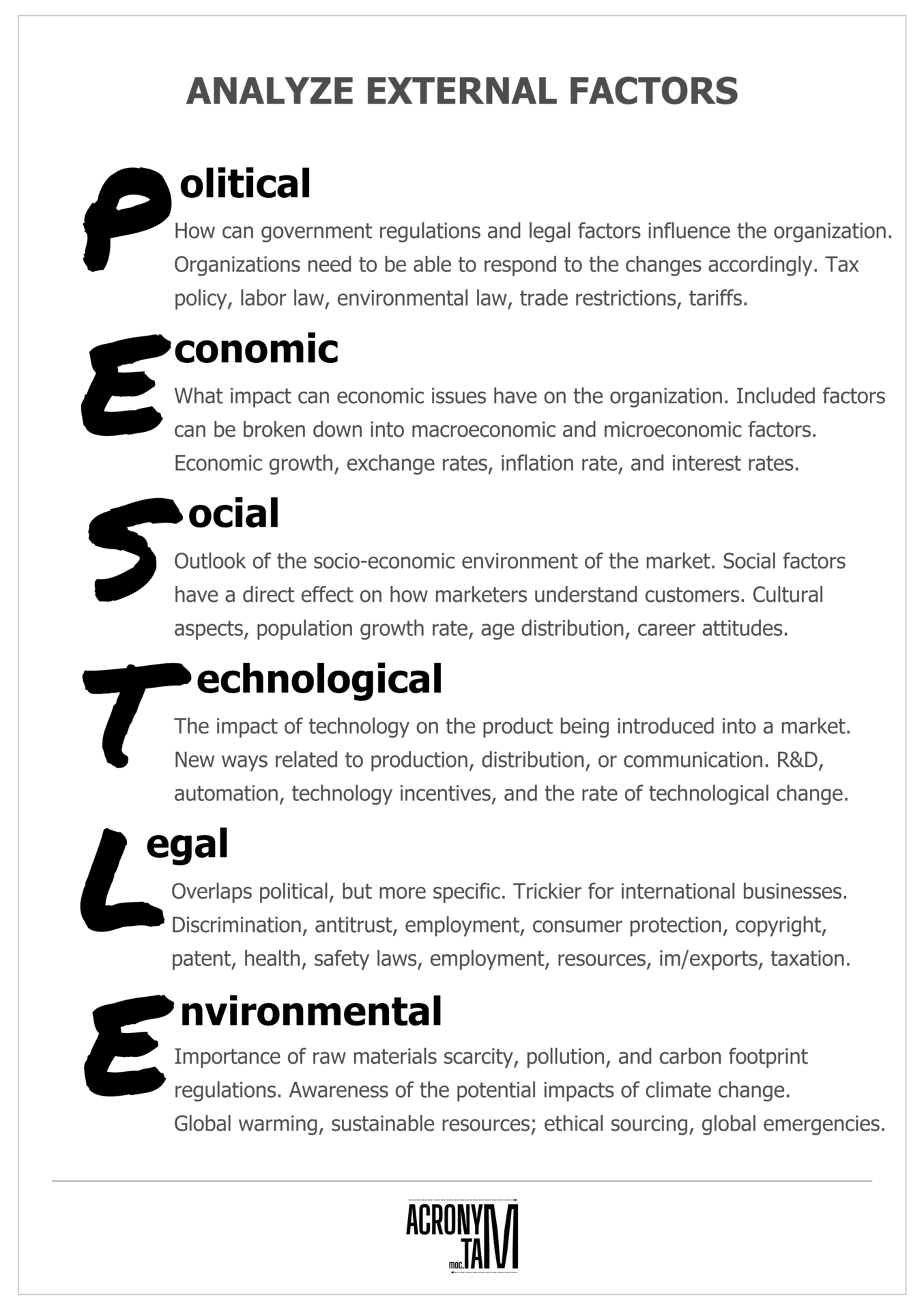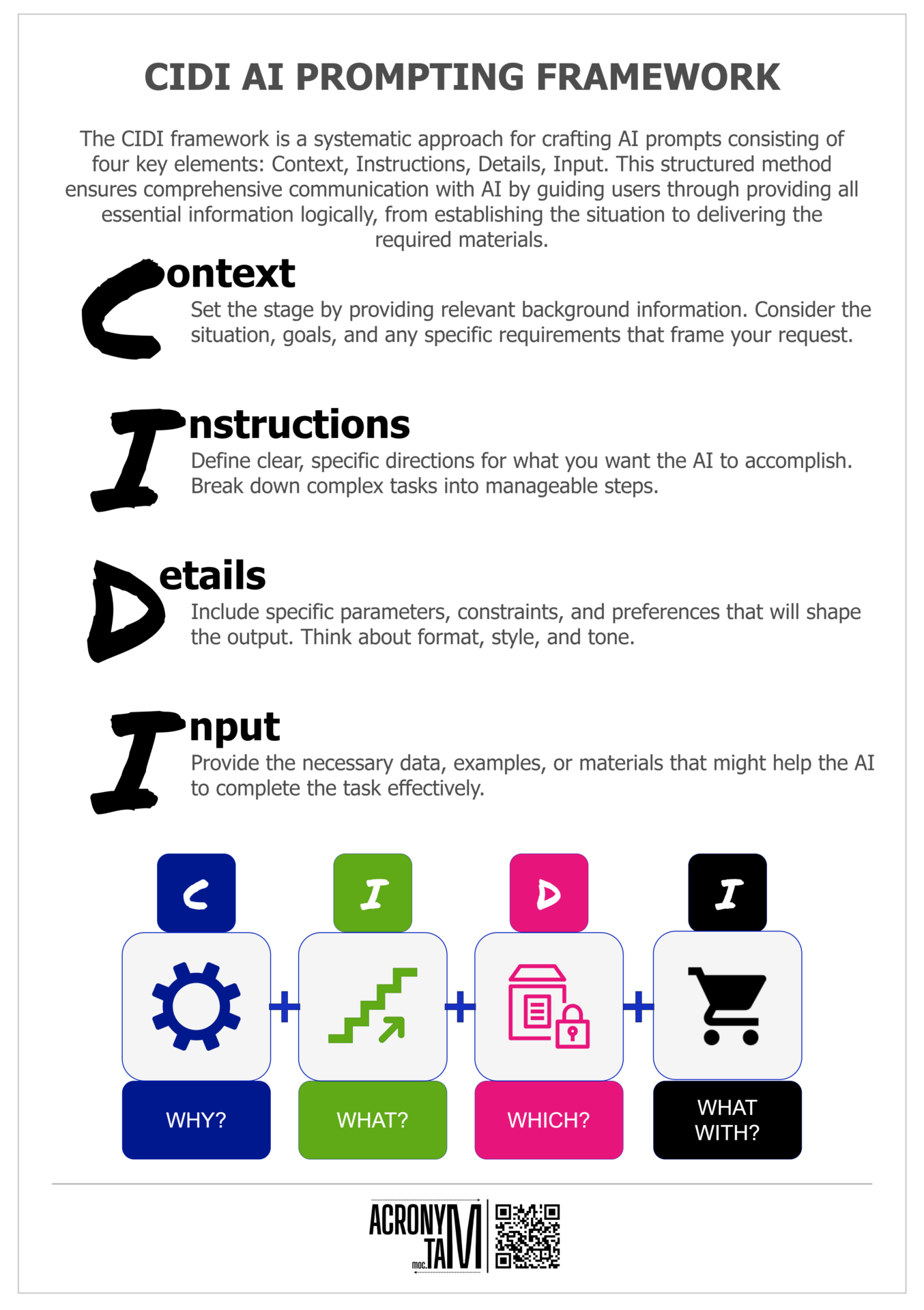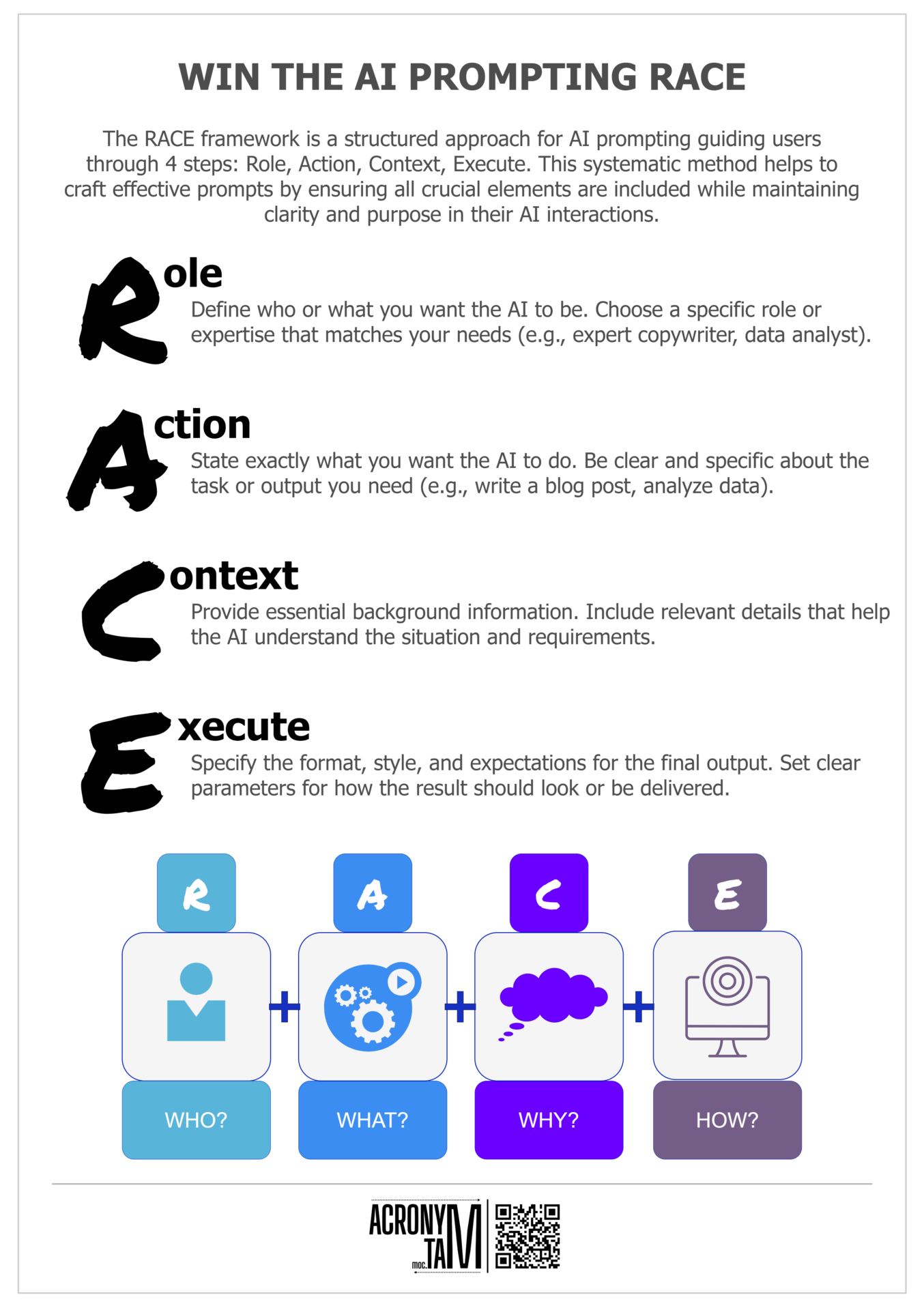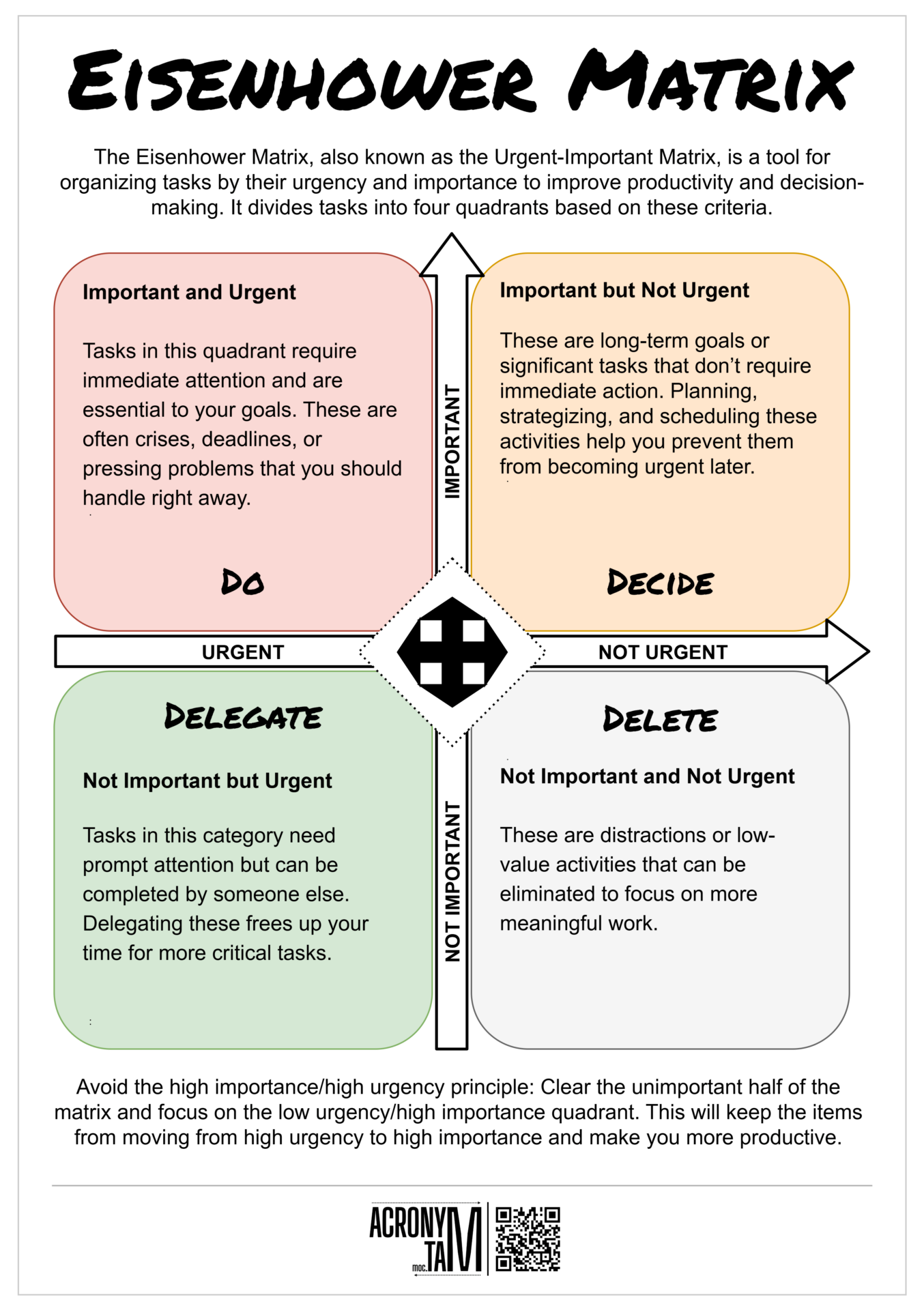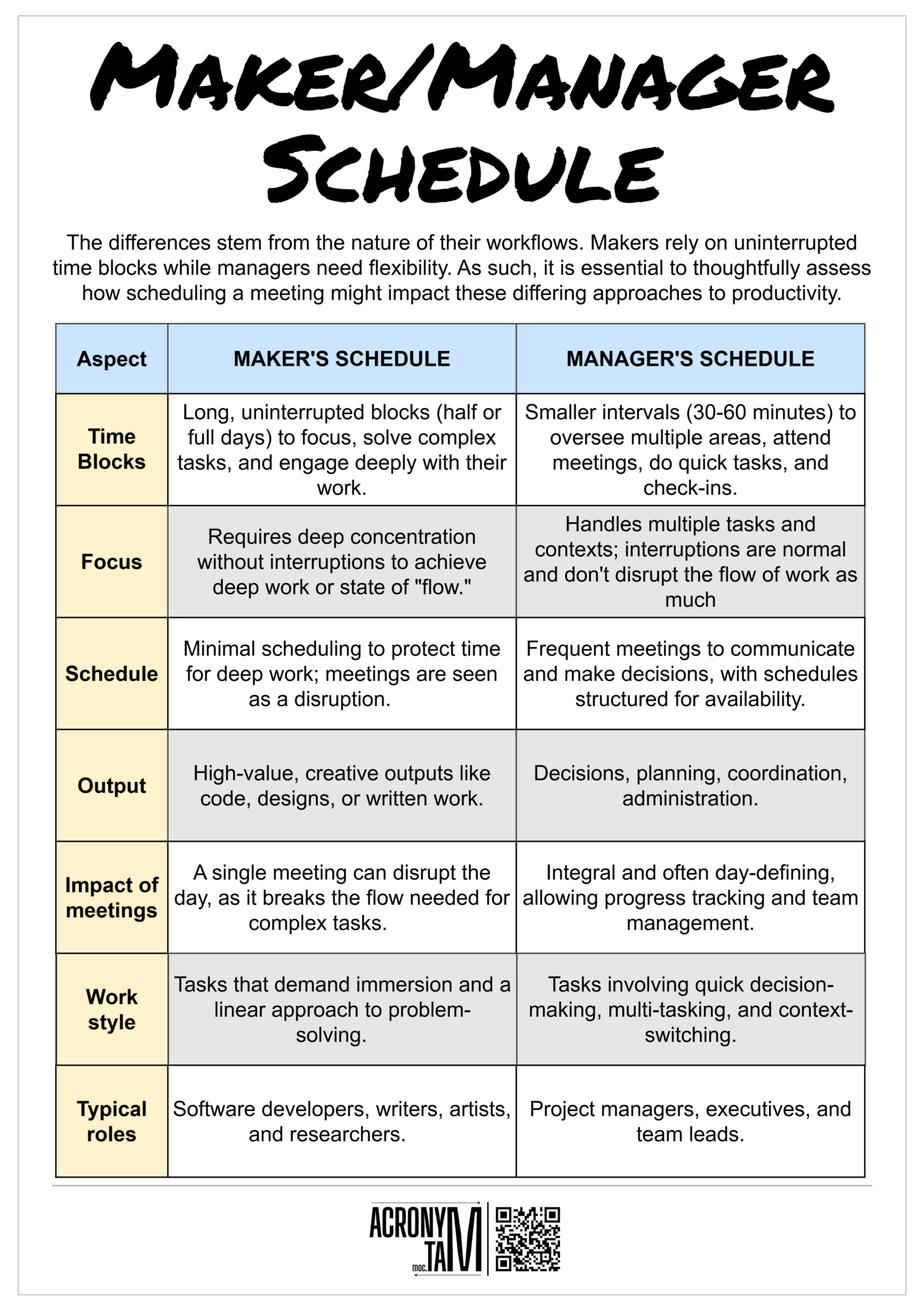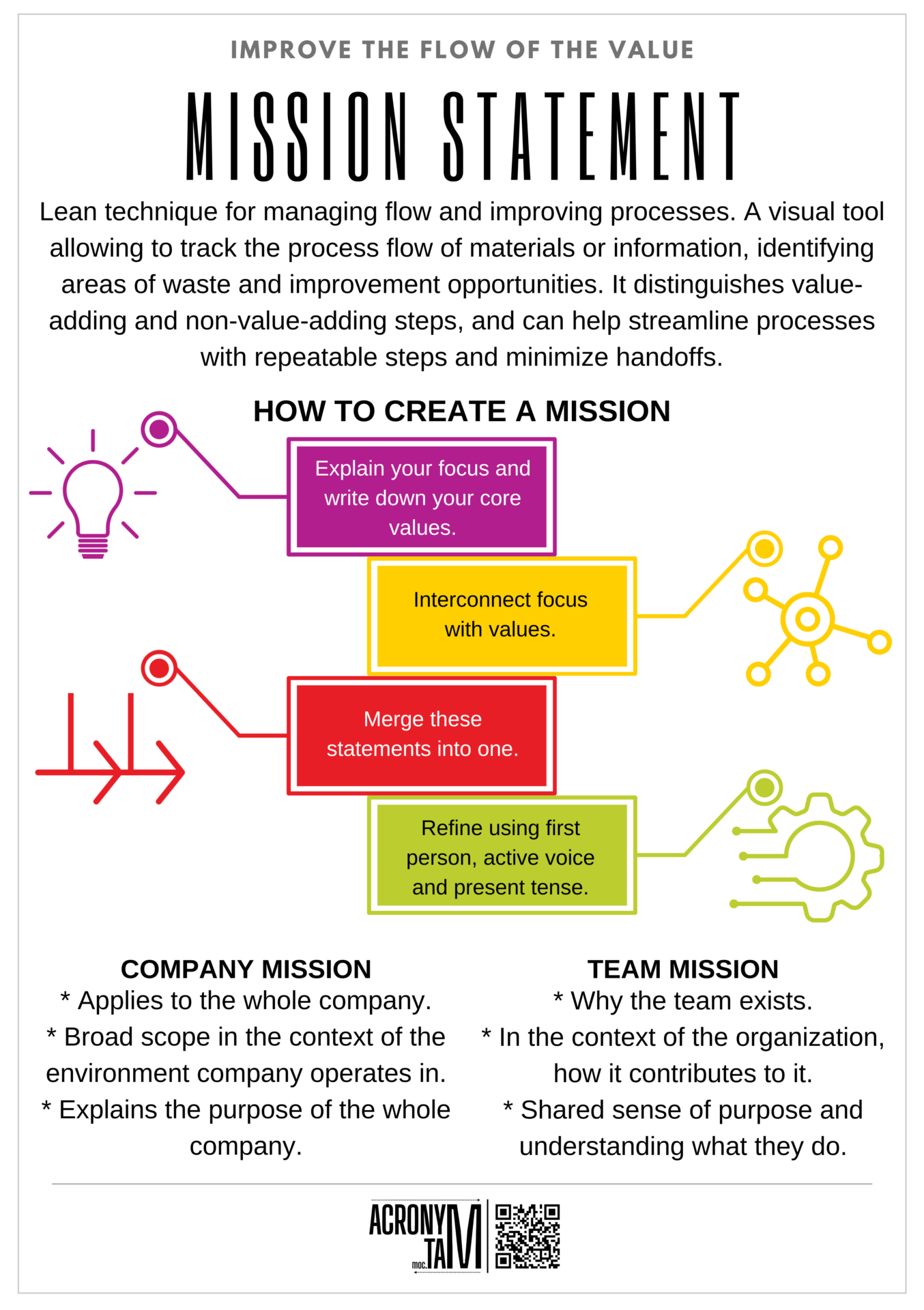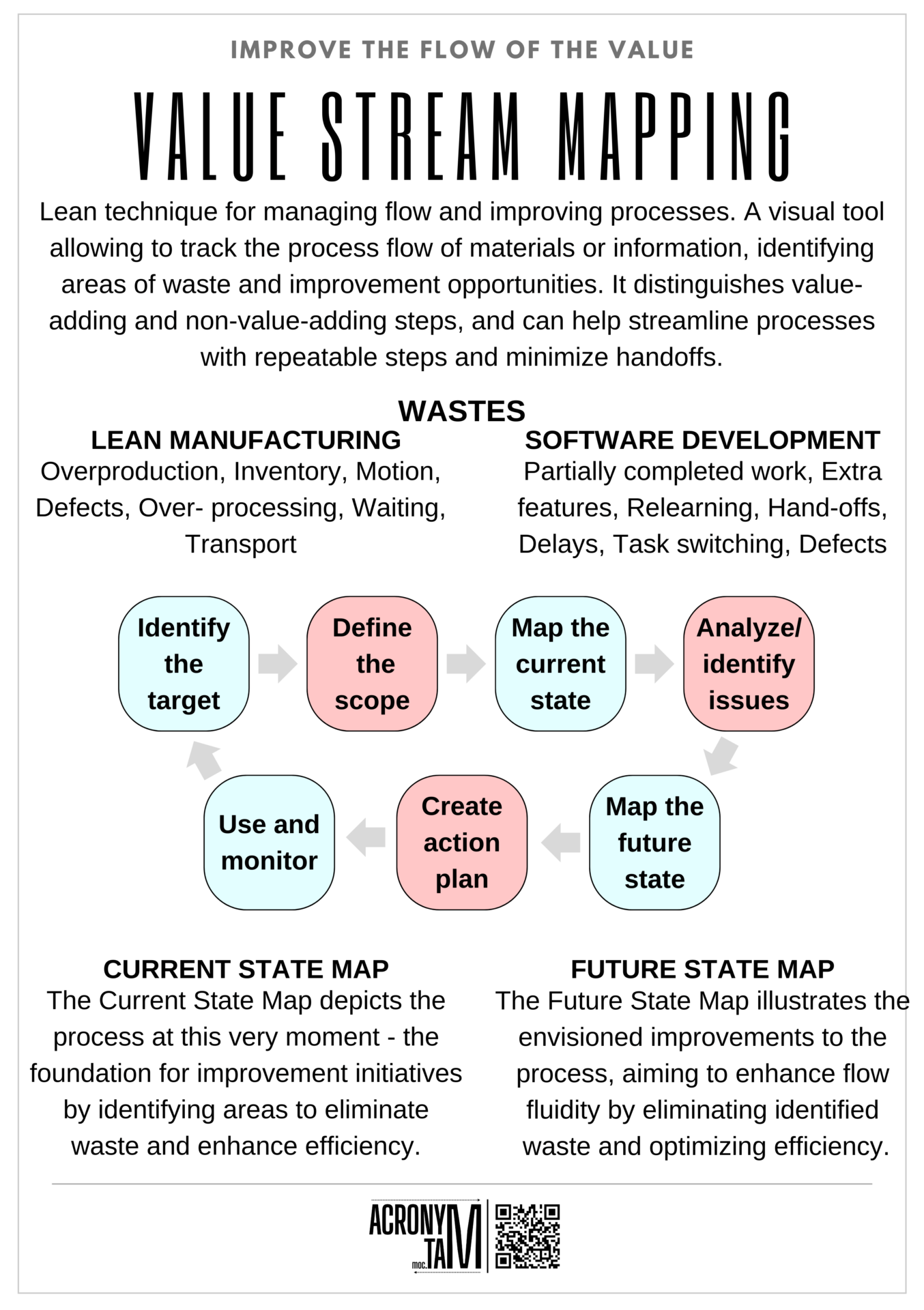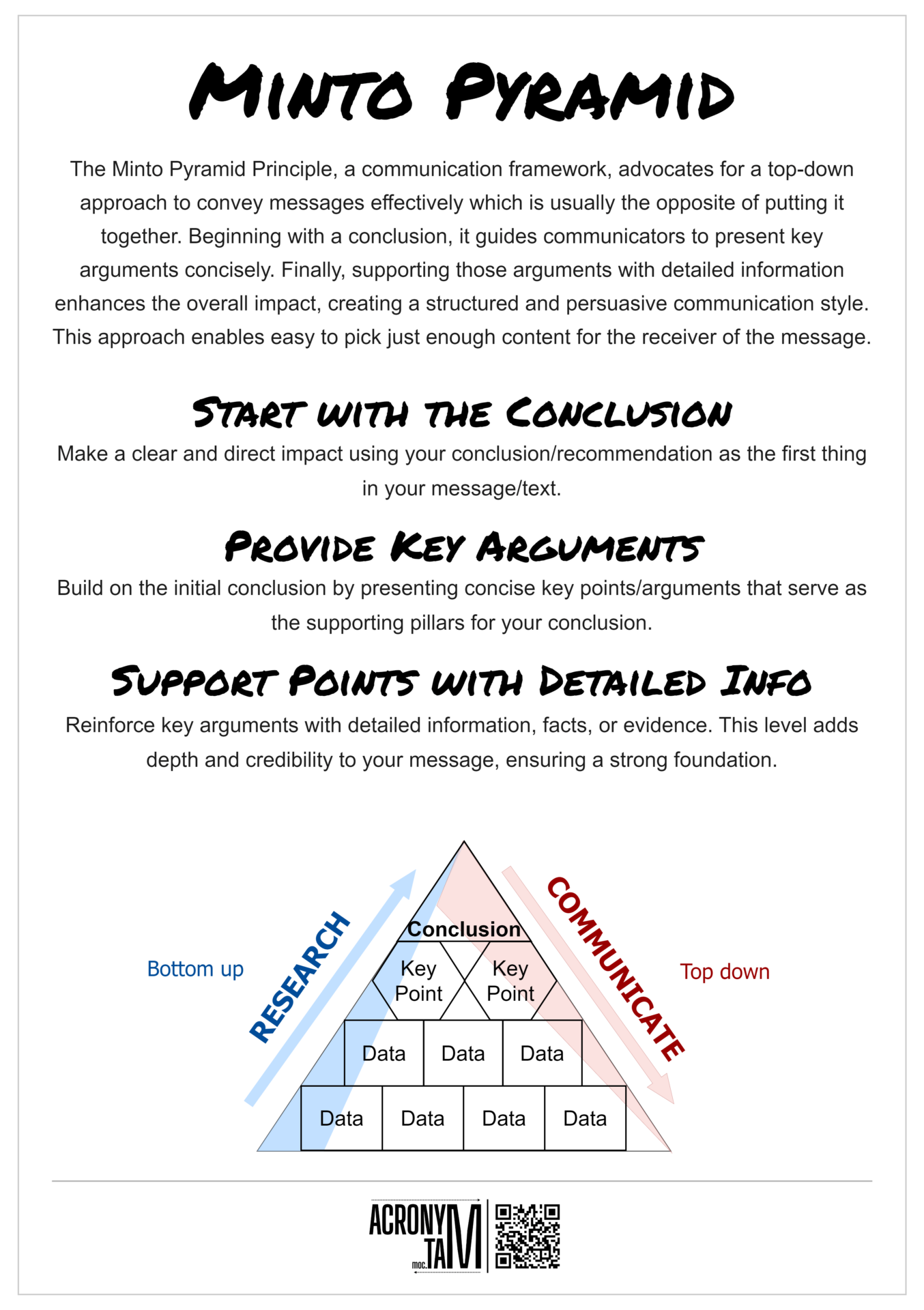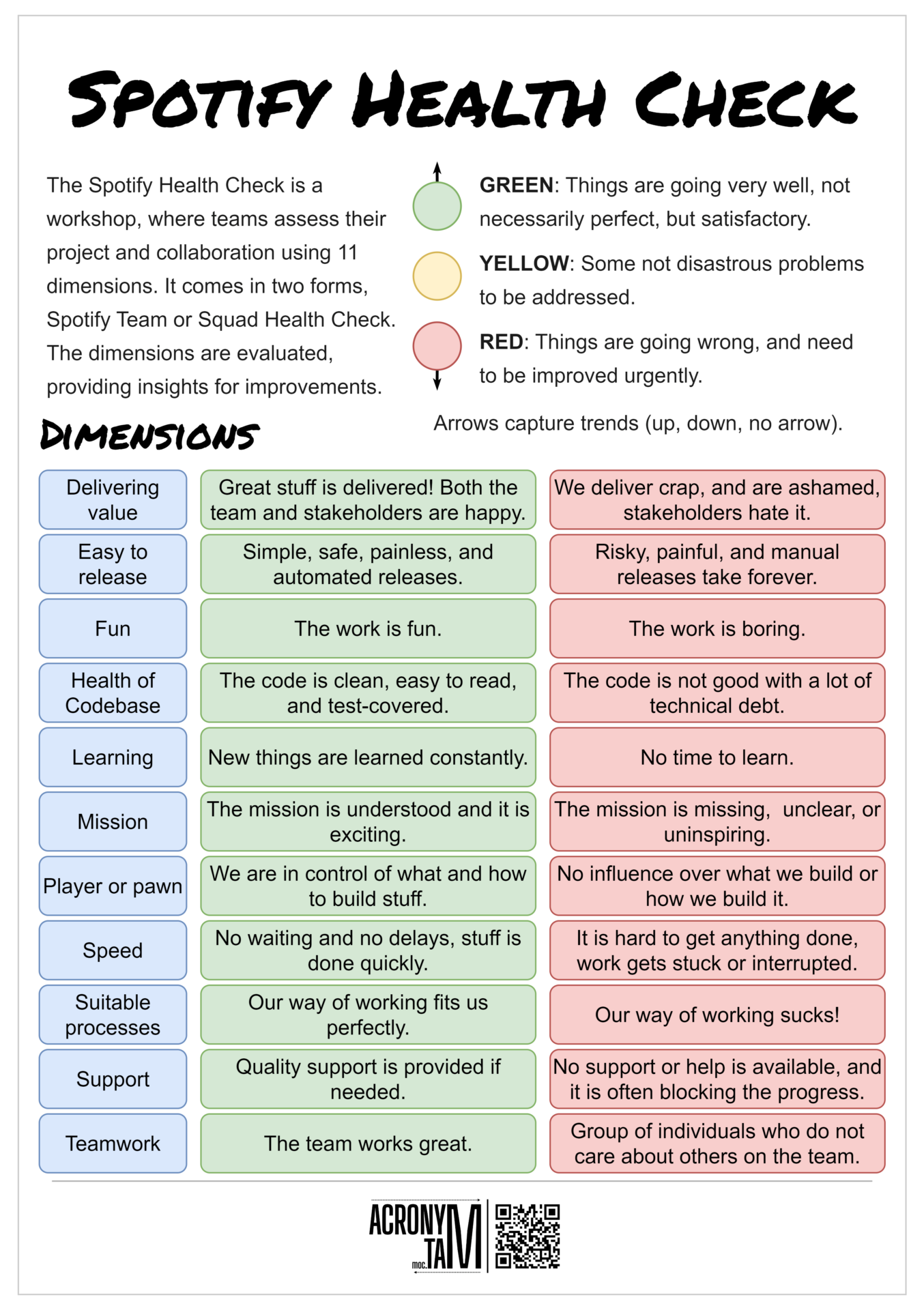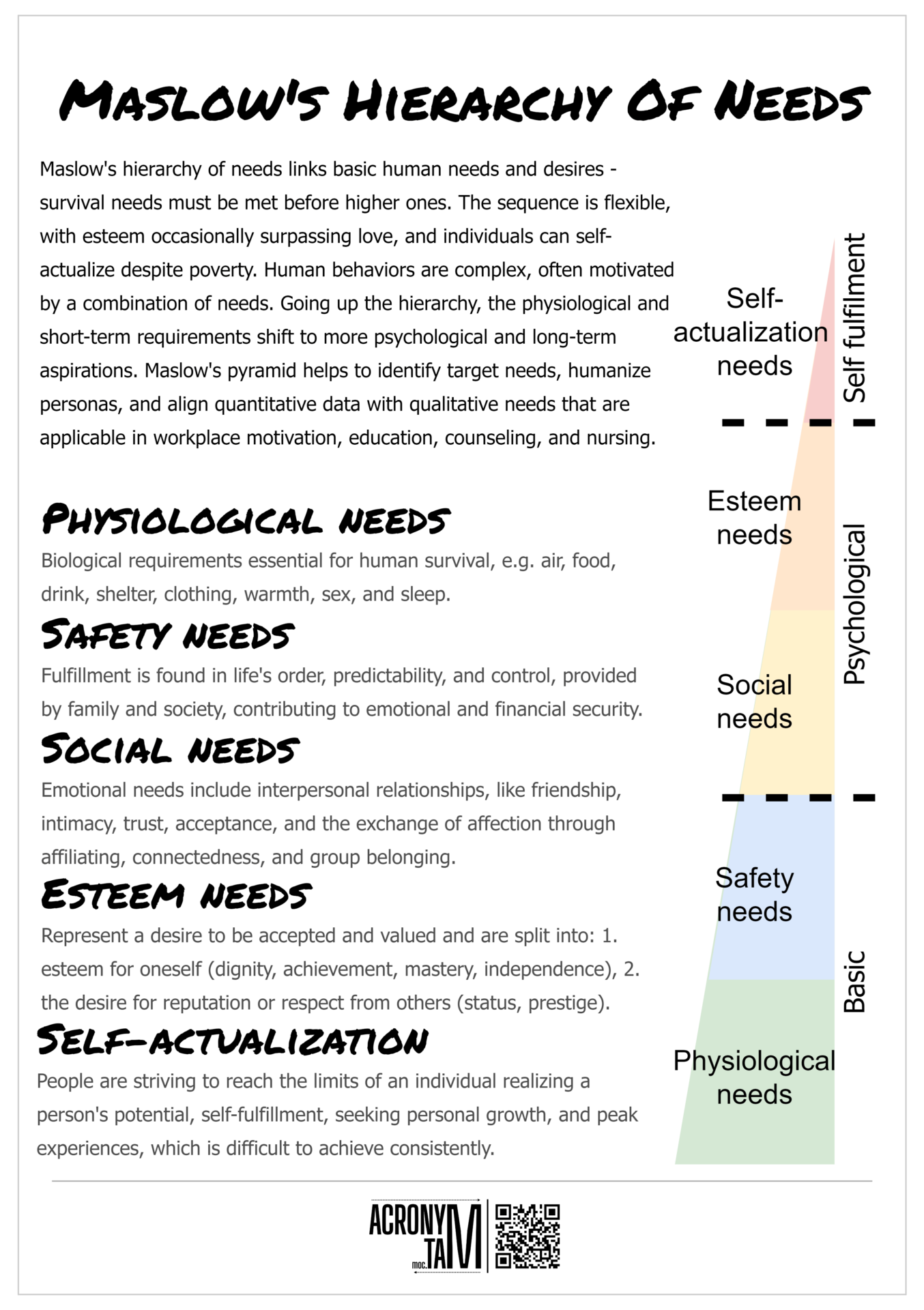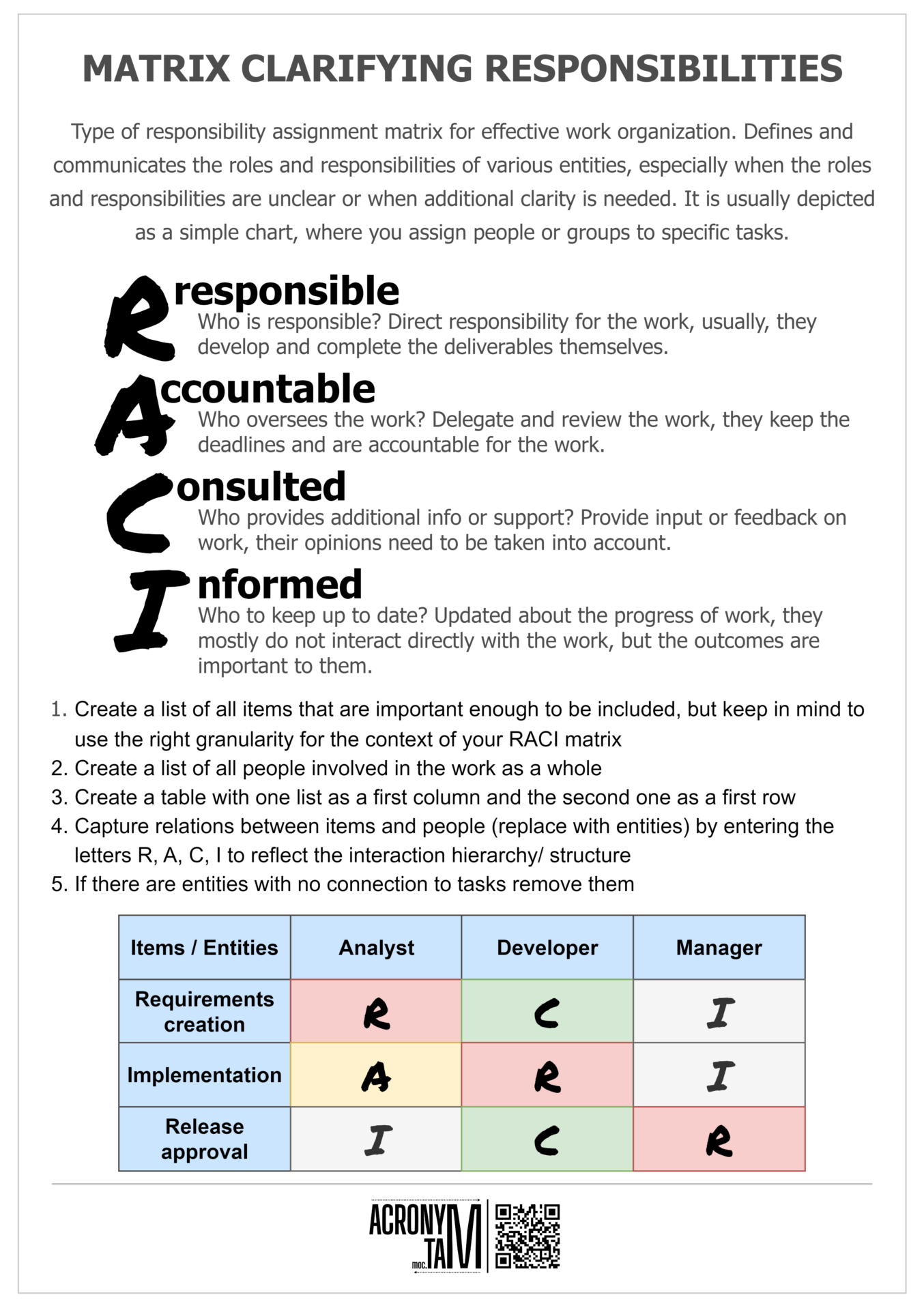Article
PESTLE
PESTLE Analysis (extension of PEST) is used to assess the external factors to the current business situation. It should be included in a business plan. Conjunction with SWOT analysis and Porter’s Five Forces allows gaining an even better picture.
Political
How can government regulations and legal factors influence the organization. Organizations need to be able to respond to the changes accordingly. Tax policy, labor law, environmental law, trade restrictions, tariffs.
Economic
What impact can economic issues have on the organization. Included factors can be broken down into macroeconomic and microeconomic factors. Economic growth, exchange rates, inflation rate, and interest rates.
Social
Outlook of the socio-economic environment of the market. Social factors have a direct effect on how marketers understand customers. Cultural aspects, population growth rate, age distribution, career attitudes.
Technological
The impact of technology on the product being introduced into a marketplace. New ways related to production, distribution or communication. Research and Development, automation, technology incentives and the rate of technological change.
Legal
Overlapping with political, however more specific like employment, access and quotas to resources, imports/exports, and taxation. Trickier for international businesses. Discrimination, antitrust, employment, consumer protection, copyright, patent, health, and safety laws.
Environmental
Importance of raw materials scarcity, pollution, and carbon footprint regulations. Awareness of the potential impacts of climate change. Global warming, sustainable resources; ethical sourcing, global emergencies.

